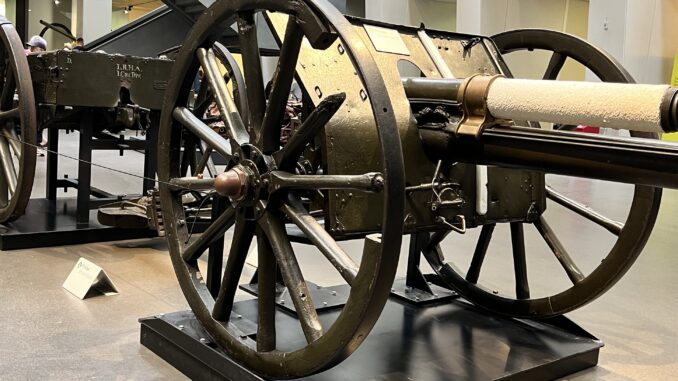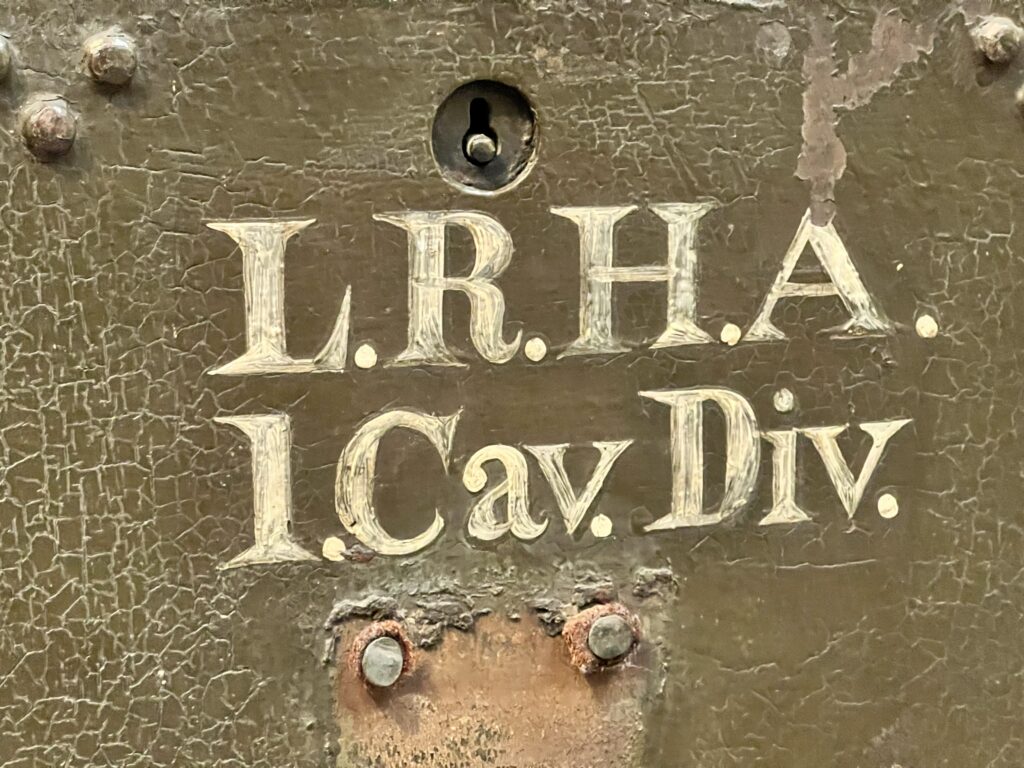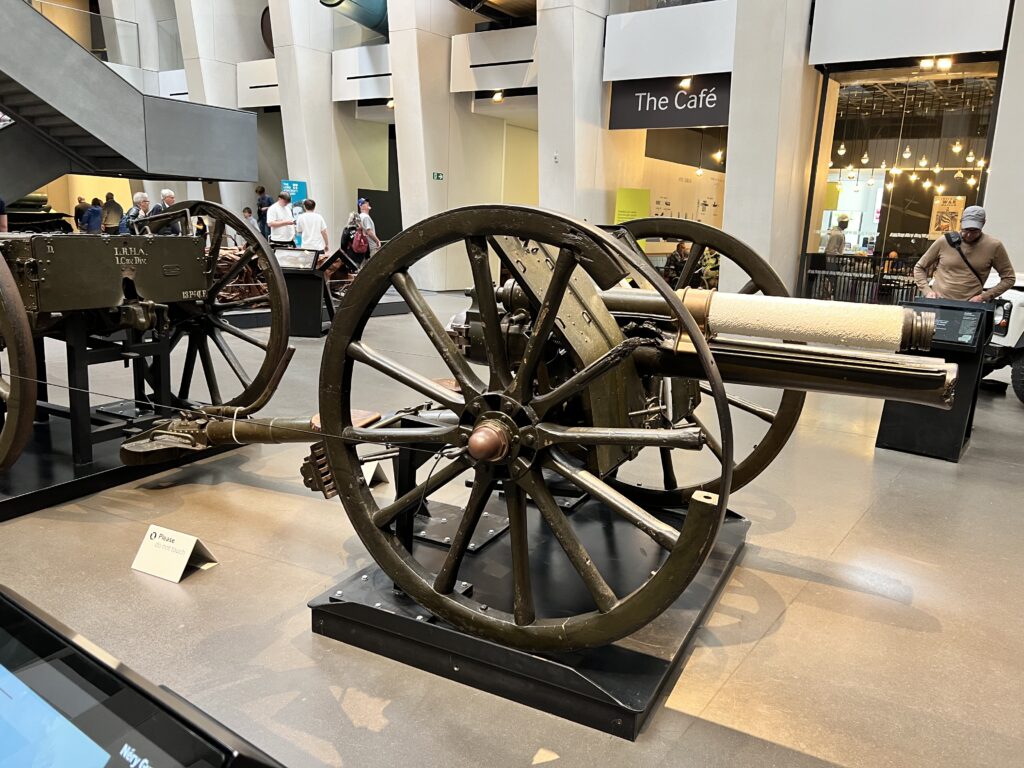
Go down into the central atrium of the Imperial War Museum in Lambeth, and one of the first things you see is the ‘Nery Gun’.
This is a British ‘QF’ 13-pounder field gun that was in combat in the first weeks of World War 1, and acquired its name from an ‘action’ at Nery in NE France on 1 September 1914, part of the BEF’s retreat from Mons.
It was the last operational gun of the Royal Horse Artillery’s ‘L’ battery, and provided covering fire on its own for 2 1/2 hours in the face of a German attack. Three men in ‘L’ battery were awarded the Victoria Cross (one posthumously) for their bravery and resolution under fire.
The QF (for ‘quick firing’) 13-pounder was the standard British Army field gun at the outbreak of the Great War. Over 400 were built and they were pulled by a team of six horses. They can still be seen in use when the RHA lets off gun salutes in the Hyde Park for royal birthdays and similar events.



Just next to the Nery Gun is a German ‘vergeltungswaffe 2‘ – ‘vengeance weapon 2’, or V2 – the world’s first guided ballistic missile.
Carrying close to a tonne of explosive, these missiles flew at supersonic speeds and reached the edge of space, taking just minutes to hit London after being launched from Germany and occupied Europe. They were immensely destructive, but random – true terror weapons – and impossible to defend against; you did not hear them or see them coming. Around 1300 V2s were fired at London with an estimated 2,754 fatalities in the city, and with a further 6,523 serious injuries.
The first landed in Chiswick on 8 September 1944 – almost exactly 30 years to the day from the Nery action. In one generation we went from 13lb shells from a gun that needed literal horsepower to bring it to battle, to a 1 tonne warhead on a supersonic missile.
The scientist behind the V2 was Werner von Braun who, along with some 1,600 other German scientists, was spirited to the US to work on the American missile and space programmes. After the Apollo 11 moon landing von Braun was carried shoulder high through the streets of Huntsville, Alabama: those doing the celebrating blind, perhaps, to the fact that he was a committed Nazi responsible for the death and suffering of thousands.
Von Braun’s career was nailed pretty conclusively by the American satirist Tom Lehrer: “when the rockets are up, who cares where they come down. That’s not my department says Werner von Braun.”


